ASCE 7-22 Wind Load Changes
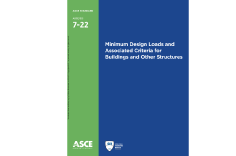
There are several changes included in the ASCE 7-22 ‘Minimum Design Loads and Associated Criteria for Buildings and Other Structures’ related to wind load calculations. This article will attempt to summarize the major changes to the wind load calculations.
Chapter 26: Wind Loads General Requirements:
Section 26.1.1
Buildings and other structures which are risk Category III or IV must also be designed to resist tornado loads per Chapter 32, when applicable.
Section 26.2
ASCE now provides free access to their online hazard tool which determines the required loadings that need to be considered (Wind, Seismic, Snow, Ice, etc..) for a given location in the United States.
A partially open building can now be considered a low-rise building. This is a common theme throughout ASCE 7-22, many places in Chapters 26 through 30 that previously indicated Enclosed and Partially Enclosed, now also include consideration for Partially Open enclosure classifications as well.
Section 26.8.2
Some minor changes made with regard to the Topographic factor criteria.
Table 26.10-1 Velocity Pressure Exposure coefficients, Kz and Kh, have been modified for some values in Exposure B and C. The commentary explains that the changes are made based upon some improved research data. This will make minor changes to many of the wind pressure calculations.
Section 26.10.2
The Velocity pressure equation has been modified to remove the Directionality Factor, Kd. The directionality factor is now included in the individual wind pressure and force equations. The Kd factor is dependent upon the shape of the building or other structure. If a structure was comprised of more than one shape, then including Kd in the Velocity pressure equation for qz was not appropriate since there could be more than one Kd for the structure. Placing Kd in the pressure and force equations is more appropriate.
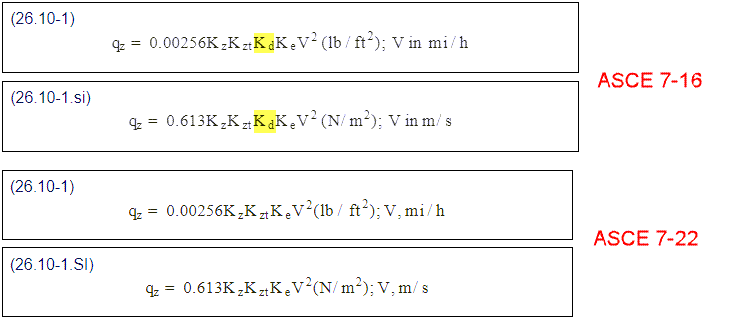
This modification in the way Kd is handled, will affect nearly every wind calculation. Kd is removed from the qz calculation, and it’s added to the Pressure and Force equations in Chapters 26 through 30. For most structures this has no net effect, since the resulting pressure is the same; however, the intermediate calculations are going to be different.
Table 26.11-1
Terrain Exposure Constants were modified.
Chapter 27: Wind Loads on Buildings
Main Wind Force Resisting System (Directional Procedure)
The previous standard (ASCE 7-16) had a Part 1 and Part 2, but in ASCE 7-22 the part 2 was removed. Part 2 applied to the special class of Simple Diaphragm buildings. This is a common them in Chapters 27 through 30, the simplified methods were removed and the more detailed methods were left. As previously mentioned, all of the pressure calculations now incorporate Kd.
Section 27.3.1.1
Elevated Building criteria was added. This is a great addition that will now give a basis for designing a building elevated on stilts, which is common for beach houses along the coast.
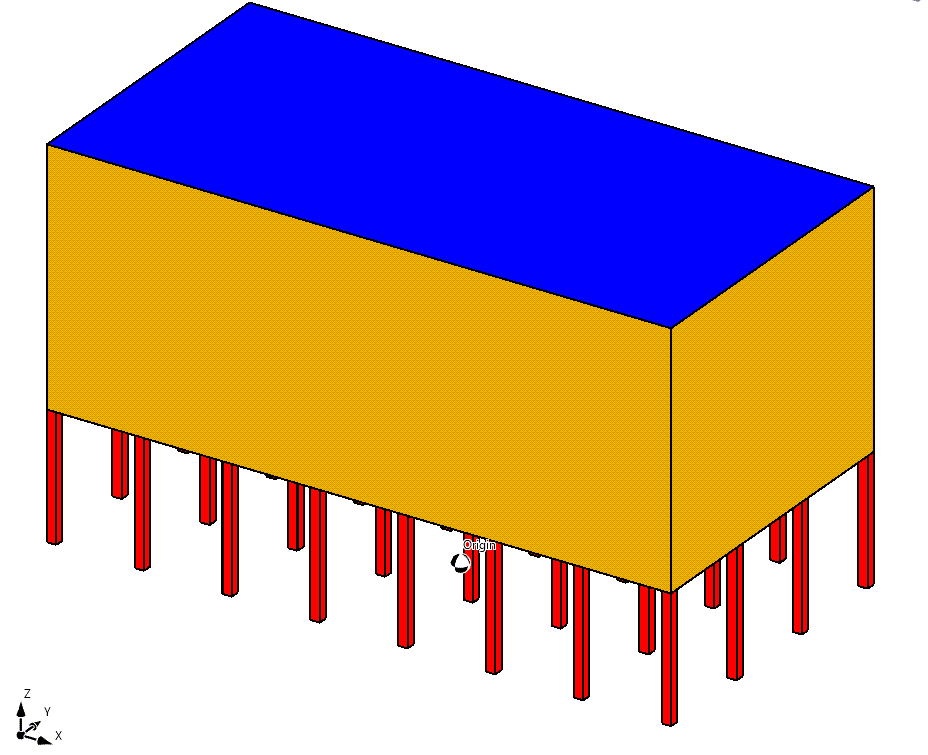
Chapter 28: Wind Loads on Buildings
Main Wind Force Resisting System (Envelope Procedure):
The previous ASCE 7-16 standard had two parts with part two being for the special class of a Simple Diaphragm Building. Part 2 was removed and now there is only on method in this chapter. Once again, all pressure calculations modified to incorporate Kd.
Chapter 29: Wind Loads on Building Appurtenances and Other Structures
Main Wind Force Resisting System (Directional Procedure)
An option for a ground mounted solar panel system was added. All force and pressure calculations modified to incorporate Kd.
Section 29.4.5
New method introduced for calculating wind loads on solar panel systems mounted on the ground
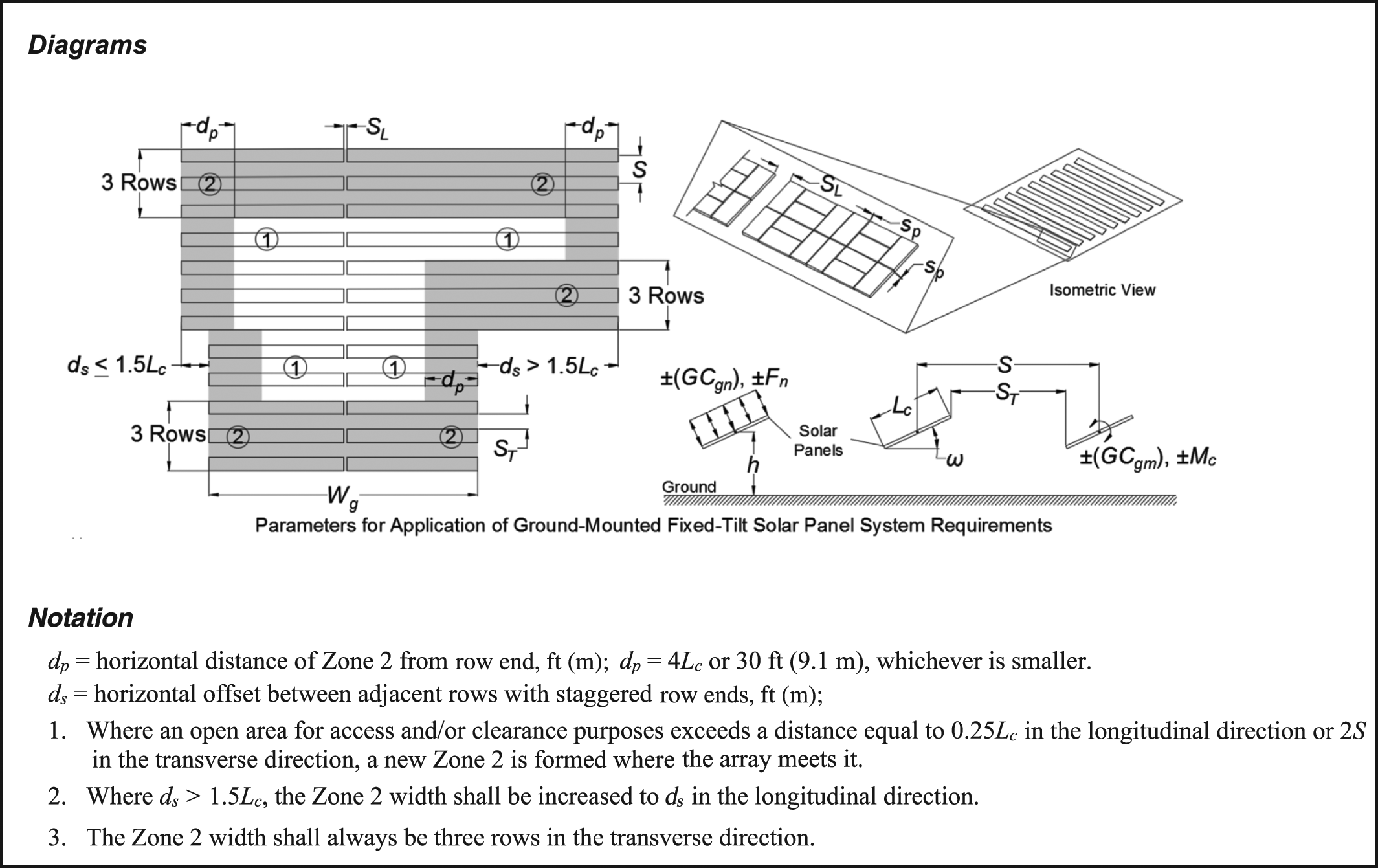
Chapter 30: Wind Loads
Components and Cladding
The Part 2 (Simplified) and Part 4 (Simplified) approaches which were in ASCE 7-16, have been removed in ASCE 7-22. The remaining parts were renumbered, so there are still parts 2 and 4; however, they don’t correspond to Part 2 and 4 from prior versions of ASCE 7. All pressure equations modified to incorporate Kd.
There are several other detailed changes to the actual figures and values referenced in Ch 30. We found an excellent article that summarizes these changes, and so rather than trying to recreate that content we have linked the article here.
Section 30.3.2.1
Bottom horizontal surface (floor) of Elevated building added for consideration in Part 1.
Section 30.4.2.1
Bottom horizontal surface (floor) of Elevated building added for consideration in Part 2.
Chapter 32: Tornado Loads
An entirely new section was added to calculate Tornado loads. Not every structure is required to be analyzed for Tornado loads, and so a flowchart has been provided to help the designer determine if tornado loads need to be considered.
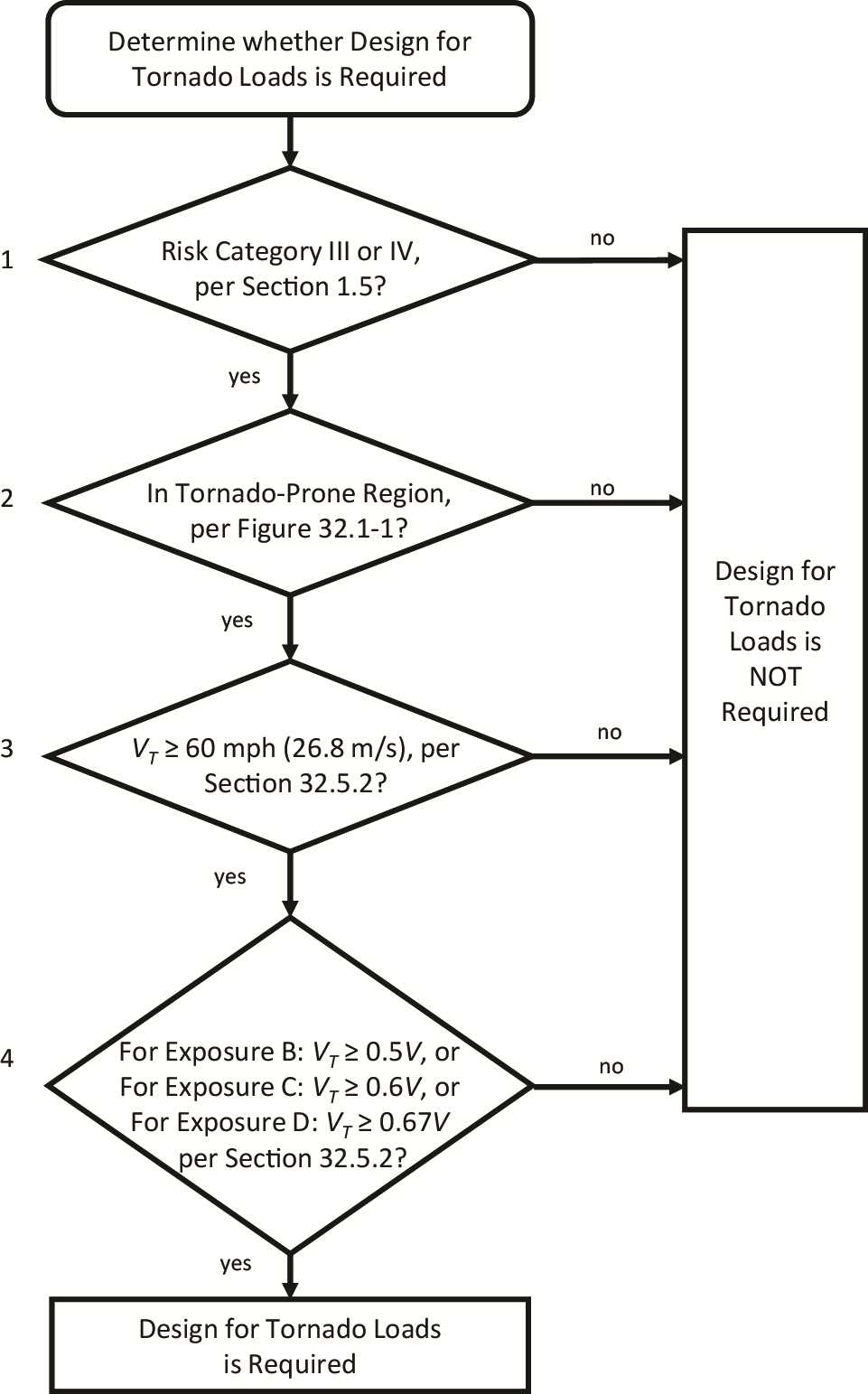
The designer will first need to determine the Tornado Wind Speed, VT. This can be found by using the free ASCE Online Hazard Tool.
When it is required that Tornado loads be considered, then ASCE 7-22 uses many of the calculations from Chapters 26 through 30; however, they introduce some new parameters that replace those used in performing the normal wind calculations. Below is a table that shows the Tornado parameter and which corresponding Wind parameter it replaces. The KvT parameter is new and only related to Tornado loads on vertical surfaces, there is no corresponding parameter in normal wind calculations.
| Description | Wind | Tornado |
| Velocity | V | VT |
| Directionality Factor | Kd | KdT |
| Velocity Pressure Exposure Coefficient |
KZ Kh |
KZTor KhTor |
| Internal Pressure Coefficient | GCpi | GCpiT |
| Tornado Pressure Coefficient Adjustment Factor for Vertical Winds | N/A | KvT |
Chapter 32 provides much more detail on how to address each specific structure, but the basic philosophy is that the calculations are performed following Chapters 26 through 30 using these new Tornado parameters.
MecaWind Software:
There have been some significant changes with regard to the wind calculations in ASCE 7-22. These changes have been incorporated into MecaWind and so if you are a MecaWind user then these changes will be easy to adopt in your calculations. In the case of the new Tornado section, this has been added to a new version of the software which is called MecaWind Ultimate. Please refer to the website, or email [email protected] for more information on purchasing the software or upgrading your existing version.
